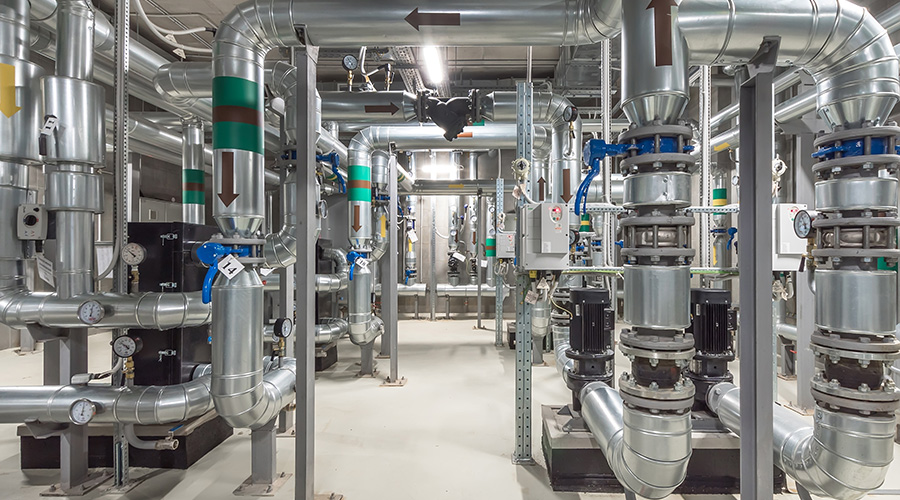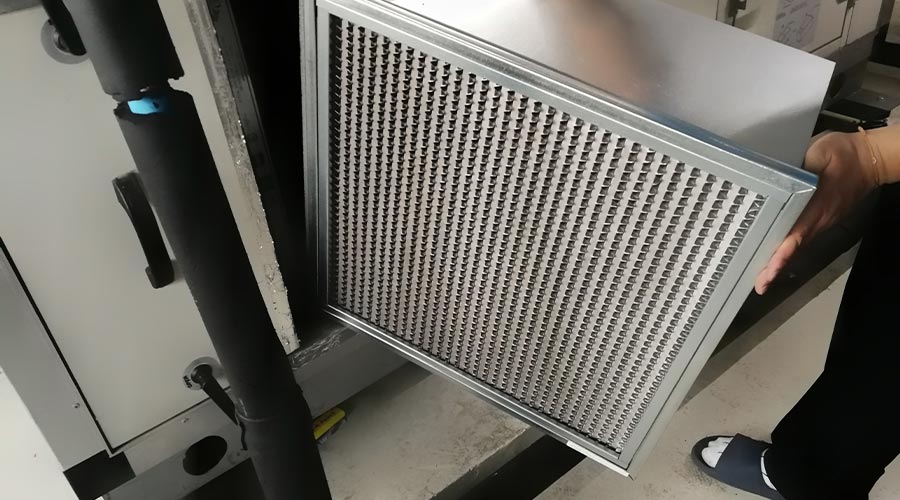Putting the Squeeze on HVAC Costs
Good system design, careful management and effective maintenance are keys to reducing mechanical system energy expenditures
Facility executives are increasingly challenged to operate buildings cost-effectively, more so as the power market moves toward real-time pricing. When operating in a deregulated market, it is essential to take every opportunity to manage electricity consumption to avoid short-term spikes during peak-demand periods.
Seizing these opportunities requires proactive management and an effectively designed and well maintained mechanical system. Here are some steps that can reduce energy costs.
Adjust Space Temperature Setpoints. Energy conservation construction codes typically call for daytime setpoints of 68 degrees during the heating season and 78 degrees during the cooling season, yet many buildings typically maintain daytime space temperatures of 72 to 75 degrees year-round. That additional level of comfort requires more power consumption. Facility executives should educate and seek the buy-in of occupants to gradually adjust setpoints to code, especially during periods of peak demand. For example, a setting of 78 degrees at 50-percent relative humidity should provide acceptable comfort when the outside temperature is 90. Make sure the mechanical system operates on setback control in unoccupied zones to the greatest extent possible.
Use Preventive Maintenance. As mechanical equipment and control devices age, performance declines. Review the operation of existing systems, implement preventive maintenance programs, and repair or replace components in a timely manner to ensure continued system reliability and efficiency. In extreme cases, when no regular maintenance has been performed, a system overhaul can generate a payback in three years or less.
Seek Energy Independence. Installing heating and cooling equipment that can use multiple fuels provides operational flexibility. This enables facility executives to manage utility costs during periods of energy price volatility. With proper planning, alternate energy sources can be implemented cost-effectively in plant equipment to provide the greatest flexibility.
On-site generation of electric and thermal energy — via gas or steam turbines, engine generators, fuel cells or microturbines — not only can reduce electrical peaks and better manage power purchases, but also can trim thermal energy purchases. For that approach to make sense, a facility typically has at least one of the following operating conditions: lower-cost fuel source compared to electricity; a need for improved power quality or reliability; opportunity for waste heat recovery; or extended hours of operation.
Thermal storage is another option for managing energy use and cost. That strategy entails shifting plant operations to off-peak utility hours, producing chilled water or ice during the night and drawing off that stored capacity during the day to meet the daytime load.
Optimize System Efficiency. Facility executives should review the comparative energy consumption of their heating and cooling systems. Reductions in energy consumption of up to 40 percent may be possible with proper design and operation of energy-efficient equipment.
Negotiate Better Prices. Facilities that can manage consumption profiles to minimize short-term peaks can more aggressively negotiate reduced energy costs. Multiple properties can also use bulk purchases to improve unit pricing.
Prepare to Seize Emerging Opportunities. Older building management control systems look for operating alarms and maintain set points, and that’s about it. Predictive or real-time system controls, available today, measure actual operating conditions as a function of time of day and ambient conditions. These controllers can then determine optimal operation of plant equipment based on equipment efficiency, cost of fuels (demand and consumption) and predictive (historical) load changes.
Similarly, systems with remote monitoring and control capabilities make it possible to benchmark one facility against similar buildings in a real estate portfolio and make operational adjustments or diagnose system problems in a timely manner. In the near future, wireless instrumentation will significantly reduce the cost of installation both for new construction and retrofits.
Given changes in the power industry, it is more important now than ever to consider the demand- and supply-side opportunities to effectively manage building operations.
Dennis Vito, PE, is operations manager, energy services, Syska Hennessy Group, Princeton, N.J.
Related Topics:











